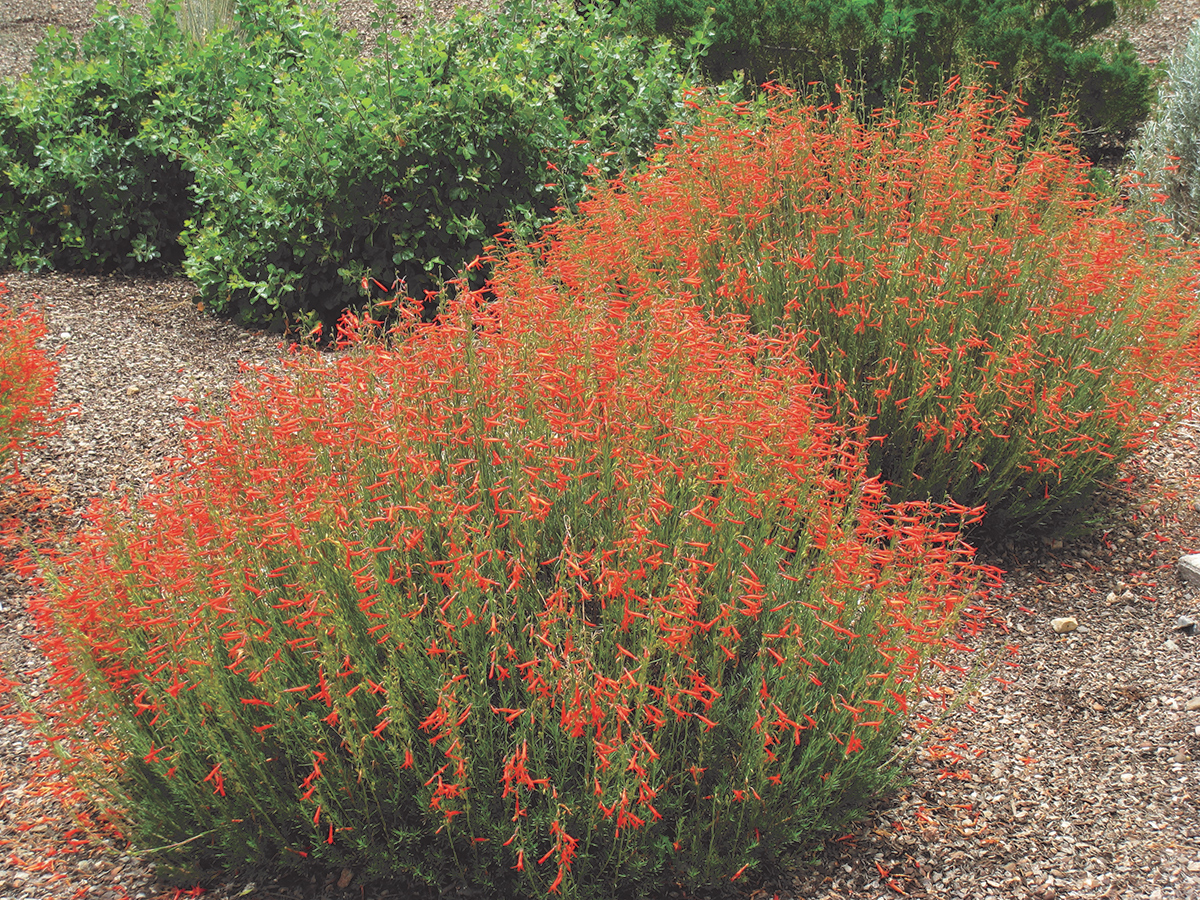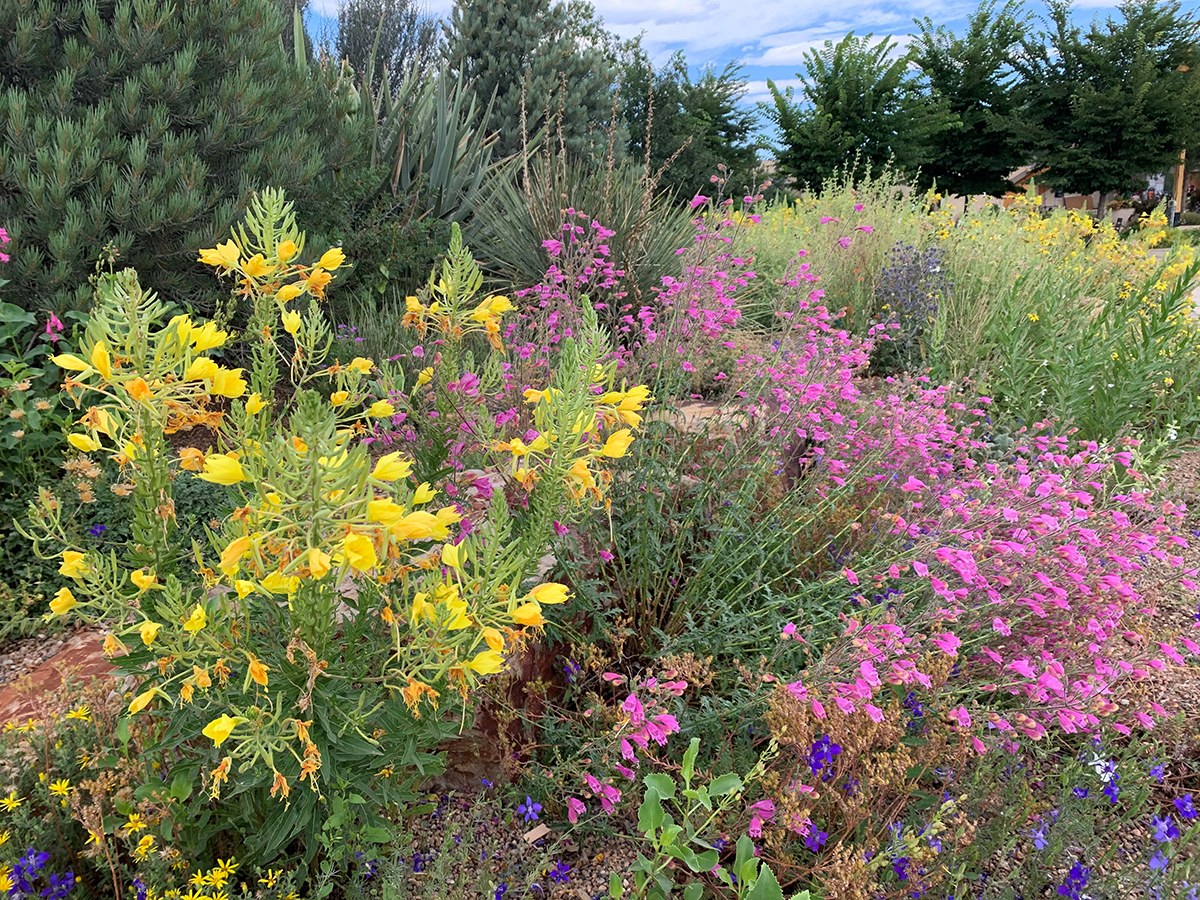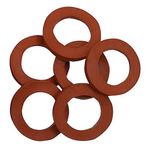
Penstemons are among the most beloved and widely known Western wildflowers. With around 280 species of the plants recognized, most mesic and dry landscapes across the West are home to at least one type of penstemon, often several. Despite their impressive geographic and genetic spread, they’re also among those that leave gardeners most disappointed. Many penstemon species bloom briefly and spectacularly in cultivation, produce an incredible number of seeds, and disappear after repeating this act for just a few years. In nature, many of these plants grow slowly because of limited water and nutrition, but in gardens, where resources abound, many species exhaust themselves by over-investing in flowering and making seed.
Read on to find three of the most reliable penstemons for regional gardens. All are known for their adaptable dispositions, extended periods of bloom, and, perhaps most notably among this group of plants, their long lifespans. At the end of this piece, you’ll also find tips and tricks to extend the life and maximize the vigor of most penstemon species, including those you may already grow.

Bridges’ penstemon
Penstemon rostriflorus
Zones: 4–8
Size: 2 to 3 feet tall and wide
The largest and shrubbiest of penstemon species in this piece, Bridges’ penstemon takes a mounded shape, staying a bit shorter than it is wide. Mature plants will fill a healthy 3 feet, blanketing themselves in orange-red, tubular flowers in midsummer. They will bloom moderately until frost in one of the most persistent floral displays of our region, and the plants themselves are incredibly unfussy. A hot site can help plants grow more vigorously, and it’s worth noting that this species tolerates periodic watering well—as long as they are mulched in gravel and planted in unamended soil. Arguably the longest-lived penstemon in Mountain West gardens, these plants routinely last more than a decade before slowing down. And they’re a hummingbird favorite, thanks to their long, reddish, nectar-rich blooms. Growing as a subshrub, these plants form a small woody frame that sprouts lots of herbaceous growth. Cut this growth back in spring, leaving the firmer woody stalks year to year.

Pineleaf penstemon
Penstemon pinifolius
Zones: 5–9
Size: 10 to 12 inches tall and 12 to 24 inches wide
Also a member of the hummingbird-pollinated group of penstemons, pineleaf penstemon is equally easygoing in our gardens. Plants are considerably smaller than Bridges’ penstemon, rarely exceeding 1 foot high and 2 feet wide. This species is among the most distinctive of garden penstemons in form, developing into a mounded subshrub covered in ½-inch long, needle-like leaves that give the plant an herb-like look. Beginning in early summer and continuing lightly through most of the growing season, pineleaf penstemon will top this form in 1-inch, brightly colored, tubular flowers ranging from screaming red to warm orange and bright, cheery yellow. Half Pint® offers a red-flowering plant around half the size of typical, while ‘Mersea Yellow’ is larger than average and among the most intensely yellow. Several oranges can be found online, including ‘Orange’, SteppeSuns® Sunset Glow, and ‘Luminous’. The small size and dense growth of this plant make it a superb edger for water-wise beds and a great filler for xeric hellstrips. In the event of winter dieback, cut it back as you would lavender once late-spring growth reveals which stalks are alive and which have died.

Richardson’s penstemon
Penstemon richardsonii
Zones: 5–9
Size: 1 to 3 feet tall and 1 to 2 feet wide
Of the cool-toned penstemons, typically pollinated by bees, one reigns supreme in terms of longevity in our gardens: Richardson’s penstemon. This species can be harder to find but is a cinch to grow yourself by direct-sowing seed in a sunny spot mid-winter or planted in seedling pots around the same time. It can be mail-ordered if your thumb isn’t quite so green. These plants bear especially attractive, lobed leaves and take a rounded form that reaches about 2 to 3 feet high and half as wide. From summer on, they top their slender stalks in bulbous flowers, usually in pink, though a spectacular true blue form can be found. Richardson’s penstemon is not as dramatic in flower as the above species but has a substantial presence and looks quite handsome out of bloom. Use it in dry beds, hellstrips, and the like; it makes an attractive, long-blooming addition to dry gardens.
Planting and care
Knowing a few tricks to growing penstemon will extend the lifespans of almost all species in addition to selecting longer-lived, more reliable species. Since penstemons tend to “live fast, die young” if given all the resources they desire, keep them resource limited. This is best done by growing them in unamended native soils and by using rock mulch or no mulch at all. Irrigate periodically, especially leading up to bloom and during drought, allowing the soil to dry between waterings. If you have the option, always shop for the starter size at the nursery, not #1s (gallons), or direct sow them yourself. And do not fertilize penstemon. The only exception is transplants that are already visibility nutrient deficient or stressed (witnessed as very limited growth and yellowing lower leaves). A single light fertilization at time of transplant is sufficient.
After bloom, cut off all but a few of the developing seed stalks from the plants. This act will force more energy back into the mother plant, rather than into seed production, and encourages the plant to live another year. Since penstemon seeds are small and numerous, with each stalk producing seed up most of its length, even a couple of stalks will still provide ample seeds for your use and allow plants to self-sow.
By balancing self-seeding opportunities with plant lifespans and selecting species for their longevity, keeping a robust, long-blooming population of vibrant penstemon in your garden can be a breeze instead of a chore.
More about penstemons and other bright blooms for the Mountain West:
Discuss this article or ask gardening questions with a regional gardening expert on the Gardening Answers forum.
And for more Mountain West regional reports, click here.
Bryan Fischer lives and gardens at the intersection of the Great Plains and the Rockies. He is a horticulturist and the curator of plant collections for a local botanic garden.
All photos unless otherwise noted: Bryan Fischer
Fine Gardening Recommended Products

Gilmore Rubber Hose Washer 10pk
Fine Gardening receives a commission for items purchased through links on this site, including Amazon Associates and other affiliate advertising programs.
– Live red rubber construction, 3/4in. washers
– Clip of 10

Gilmour 5/8″ x 25′ Round Weeper Soaker Hose
Fine Gardening receives a commission for items purchased through links on this site, including Amazon Associates and other affiliate advertising programs.
Lightweight garden hose is made of 100% recycled vinyl for clog resistant, consistent soaking in the garden or around foundations. Can be installed above or below ground to efficiently deliver water directly to plant roots. Can be linked with other hoses to create your own DIY garden drip irrigation system, and is flexible for easy storage and space saving.

Gilmour 811673-1001 Sprinkler
Fine Gardening receives a commission for items purchased through links on this site, including Amazon Associates and other affiliate advertising programs.
– 43-ft. spray distance (up to 5, 800 sq. ft. coverage)
– Adjustable collar for partial- to full-circle coverage
– Dial precisely sets spray distance
– On/off switch eliminates trips from sprinkler to spigot








